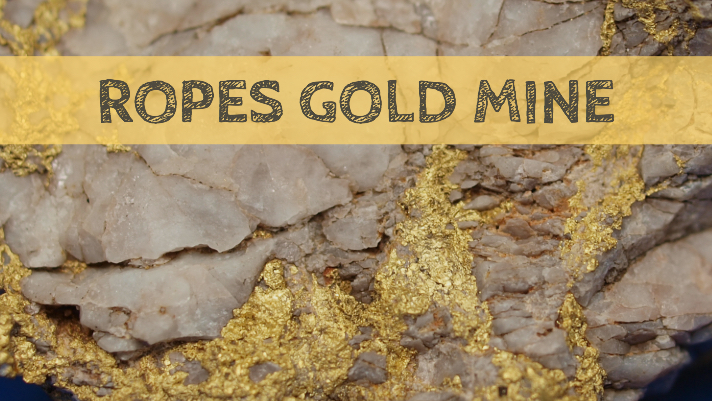
The Ropes Mine is located in the northern part of the Ishpeming Greenstone belt, (also called the Marquette Greenstone belt) in Michigan’s Upper Peninsula.
Ropes Mine was founded by the man named Julius Ropes who discovered gold among the serpentine rocks located in the northern region of Ishpeming in 1881. As a result of the discovery, the man got an inspiration to found Ropes Gold and Silver Company to expand on the discovery.
This mine was never exceptionally rich, and it operated on-and-off for over a century since the initial discovery. It was plagued with a variety of challenges but gold was still successfully recovered accounting for several million dollars in total output. Further details are provided below.
Ropes Mine Operations
In 1883, mining operations commenced with the sinking of the first shaft, and the operations continued all the way up to 1897. After 15 years of operation it was shut down by force due to the financial predicaments the mine was undergoing at the time. But before its first closure, the mine was able to go as far as 813 feet in depth and had produced gold that was worth $645,792 which was obtained using mercury amalgamation and gravity separation processes.
From 1900 to 1901, the mine was reclaimed leading to the extraction of gold worth $200,000 through the application of the new technique Cyanide leaching process by Corrigan, McKinney and company.
With the passing of time a number of operators exchanged hands in the operations of the mine without production until the year 1970. In this particular year, the inflation rate had increased and the gold prices were enough to compel Callan Mining Company to purchase the mine, and made investments in exploration and face-lifting of the mine.
Modern History of the Mine
By the year 1983 the mining operations at Ropes Mine resumed and there was the opening of a new shaft, which was sunk in 1984. The coming of the new shaft led to an increase in mining operations. The workings had increased further to about 1548′ depth.
During that time, the ore rock was transported to the dressing plant of retired Humbolt Iron Mine where the gold extraction was conducted at very affordable rates, and this in itself made Ropes Mine operations easier. As a matter of fact, the Ropes Mine was going to have numerous challenges in having the gold extracted from the ores, if the Humbolt Iron Mine had not been there.
The operations at the mine continued to progress up to the point that the uppermost levels got collapsed in 1987. The collapse led to the hole getting filled with sand. Challenging yes, but that did not stop the mine from running its operations.
The company began to have financial challenges due to expensive repairs that were undertaken in 1991. As if that was not enough, the reduction in gold prices on the market equally brought a huge blow to the mine and all its operations, leading to its closure.
Also Read: Gold Prospecting in Michigan
A True Michigan Gold Mines
Despite the challenges the Ropes Mine got subjected to, among them being erosion which happened in the area around the main shaft, the mine produced some gold known to have been Michigan’s finest. It is also important to note that at the time of its active mining operations, the Ropes Mine was considered the only gold mine in Michigan that was truly commercial and successful in its operations.
In a nutshell, the Ropes Mine of Ishpeming, Michigan began its operations in the late 1800s. Its active mining operations began in 1883 producing gold that was worth several hundred thousands of dollars. The mine holds a good record concerning the quality of gold extracted. It is known to be the only successful gold mine that was running commercially in the state of Michigan at that time.
Some still believe that the Ropes Mine has huge potential of undiscovered gold. Remember, mining stopped because of low gold price and high cost of operation. I doesn’t mean that there isn’t still gold in the ground!
Next: Finding Michigan’s Native Copper Deposits

